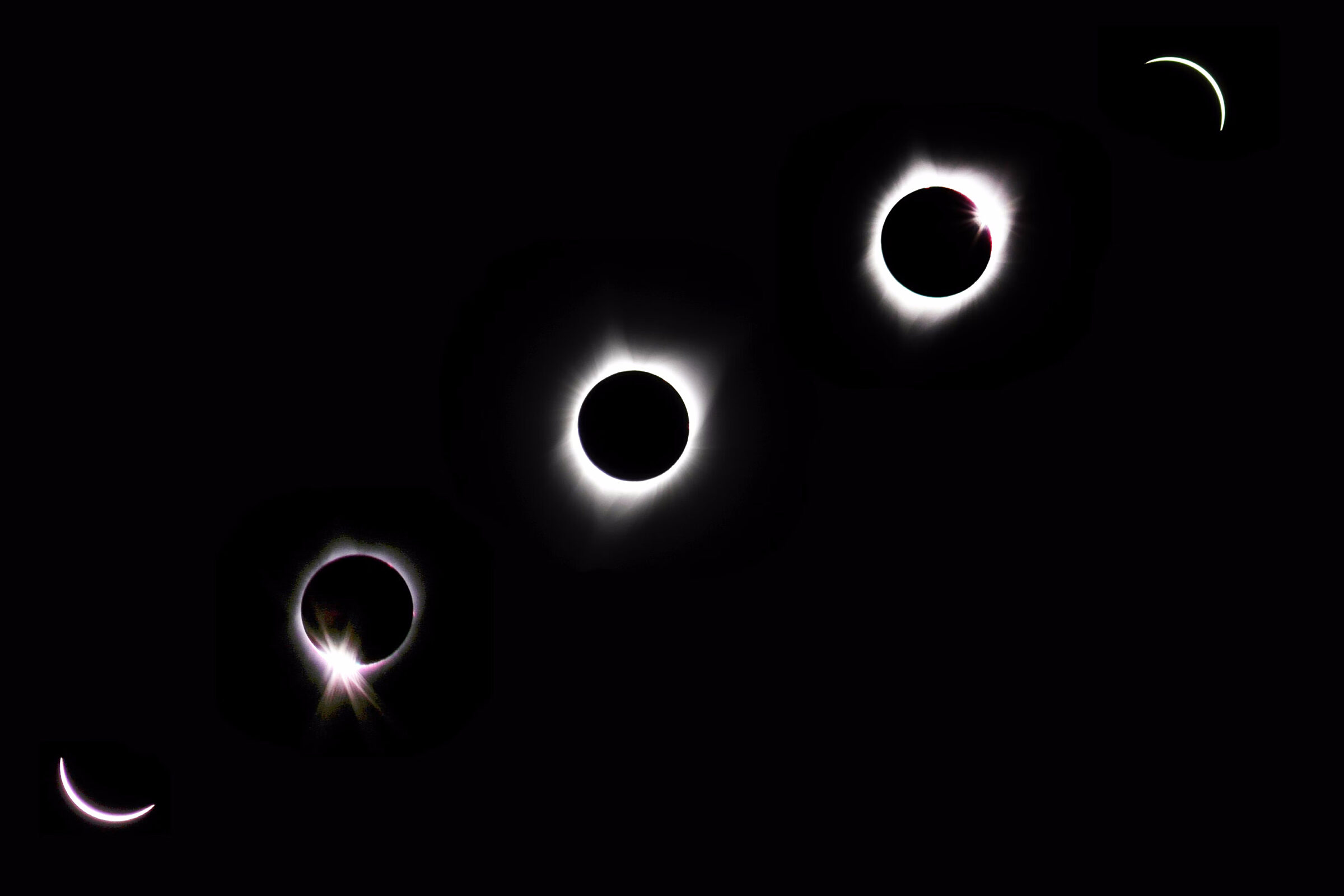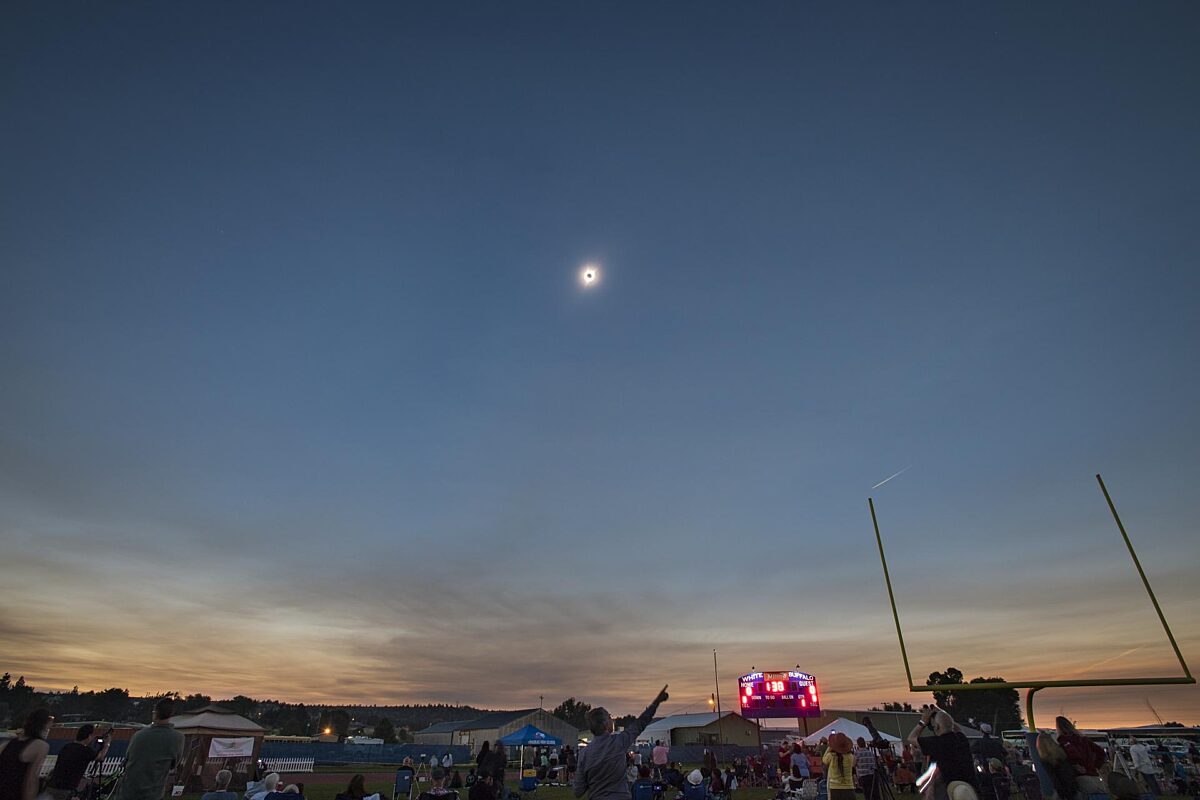Jason Davis • Mar 18, 2024
How to find eclipse events in your area
The 2024 total solar eclipse is less than a month away. On April 8, the Moon will cross in front of the Sun, casting a shadow on our planet. Most of North America will see a partial eclipse, and for those in the path of totality — the deepest part of the Moon’s shadow — the sky will darken, treating viewers to a rare glimpse of the Sun’s corona.
We highly recommend traveling to the path of totality if you have the means, but if you can’t make it, you can still enjoy the wonders of a partial eclipse. Regardless of where you watch, there are hundreds of eclipse events being held all across North America. Many will have experts and solar telescopes on hand to broaden your enjoyment of the big day.
We’ve put together a list of resources below to help you find an eclipse event in your area. Check out our eclipse headquarters page to learn more about the eclipse, including our Eclipse-O-Rama event in Fredericksburg, Texas.

The Eclipse Company
One of the most comprehensive resources for finding events in the path of totality comes from The Eclipse Company, which has partnered with The Planetary Society.
The Eclipse Company’s website and app allow you to select a state or province in the path of totality and see a list of communities hosting events. The website version includes a map that highlights communities with events, as well as links to event websites.
Right now the app includes over 700 events, making it one of the best resources for planning your day in the path of totality.
American Astronomical Society
The AAS is an international organization of professional astronomers, amateur astronomers, and astronomy educators. Their eclipse pages have links to events being held in major cities along the path of totality, and a longer list of events sorted by states and provinces.
The AAS also has a comprehensive eclipse resource section that covers everything from eye safety to how to take pictures of the eclipse.
NASA
NASA has a list of eclipse events that are NASA hosted or affiliated, or will have a NASA expert present. Make sure to filter the list so that you’re only seeing events related to the 2024 eclipse. Not all events are in the path of totality.
If you can’t see the eclipse for yourself, you can tune in to NASA’s live stream, which will feature experts answering audience questions and telescopic views from locations along the path of totality.
NASA also has a comprehensive eclipse resource page. Check it out to find maps, viewing tips, FAQs, and more.

How to safely view a total solar eclipse
To avoid risking permanent eye damage, you need eye protection to watch a solar eclipse. The easiest way to ensure eye safety is using solar eclipse glasses. These should be special glasses that say “ISO 12312-2” on them and are made by a vendor approved by the American Astronomical Society. Otherwise, your glasses don’t meet international safety standards and aren’t fit for solar viewing.
Check out our complete solar eclipse glasses guide to learn more. You can also purchase The Planetary Society’s solar eclipse glasses from AAS-approved vendor American Paper Optics.
Great American Eclipse
The website greatamericaneclipse.com is run by a team of eclipse experts. It has detailed predictions for how many people will travel to each state. The bottom of each state page has links to events happening in local communities.
Canada-specific
The Eclipse Company lists events taking place in the path of totality in Ontario, Quebec, New Brunswick, Prince Edward Island, Nova Scotia, and Newfoundland.
The CBC has a list of Canadian events taking place in the path of totality. Space.com also highlights some good places to watch the eclipse in Canada. The Canadian Space Agency has a resource page with some Canada-specific information.
Mexico-specific
NASA’s event list includes two in-person events in Mazatlán, Sinaloa, and a telescope live stream from Torreon, Coahuila. Space.com has a list of promising locations in Mexico to see the eclipse.
Additional events
If the above resources aren’t enough to find an eclipse event in your area, you may have to do your own research. The AAS recommends checking for eclipse events through science museums, planetariums, amateur astronomy clubs, colleges, and universities. With a little luck, you’ll be able to find a great place to experience the magic of this extraordinary cosmic spectacle.


 Explore Worlds
Explore Worlds Find Life
Find Life Defend Earth
Defend Earth

